What is a Site Plan in Architecture?
Have you ever wondered how architects and planners envision and design the layout of a project before the construction even begins? This is where site plan architecture comes into play. Site plan architecture is a critical component in the design process, serving as a blueprint that outlines the proposed development of a space. It involves detailed drawings and documentation that show the positioning of buildings, landscaping, utilities, and other features on the property. This meticulous planning ensures that every element is strategically placed for optimal functionality, aesthetics, and compliance with zoning regulations.
Understanding site plan architecture is essential for anyone involved in construction, urban planning, or real estate development. By studying well-crafted site plans, professionals can draw inspiration and learn best practices for their projects. In this article, we’ll delve into the core aspects of site plan architecture, explore its importance, and present 10 stunning examples that illustrate innovative and effective design solutions.
1. Urban Residential Complex Site Plan
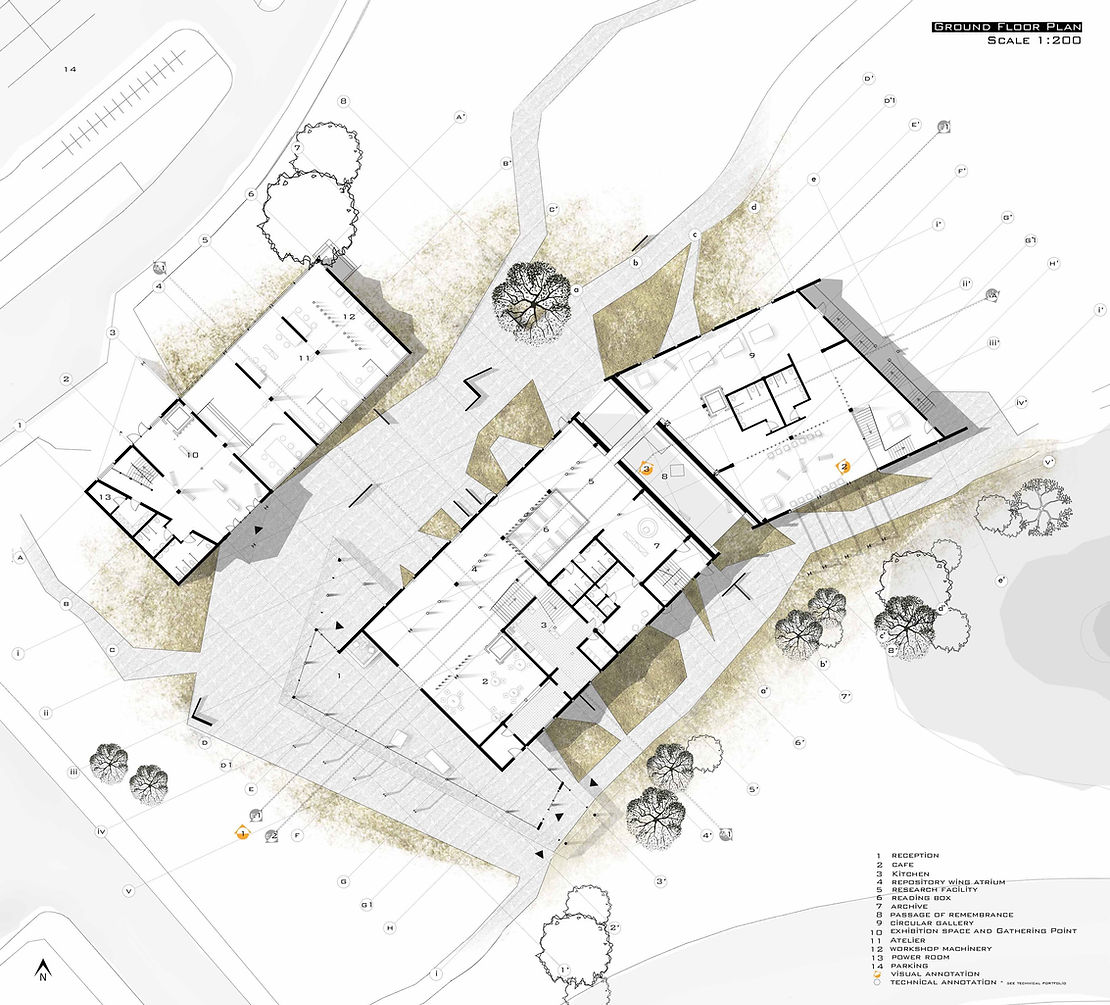
Source: Calimanisor
This urban residential complex site plan showcases a well-organized layout, optimizing space for both living and communal areas. The design integrates multiple residential blocks, each carefully positioned to maximize natural light and ventilation. Green spaces and walkways connect the buildings, providing residents with ample outdoor areas for recreation and relaxation.
The site plan also highlights essential amenities such as parking, reception areas, and communal facilities, ensuring a high quality of life for the residents. By strategically placing these elements, the plan promotes both functionality and aesthetic appeal, creating a harmonious living environment within an urban setting.
2. Suburban Residential Site Plan
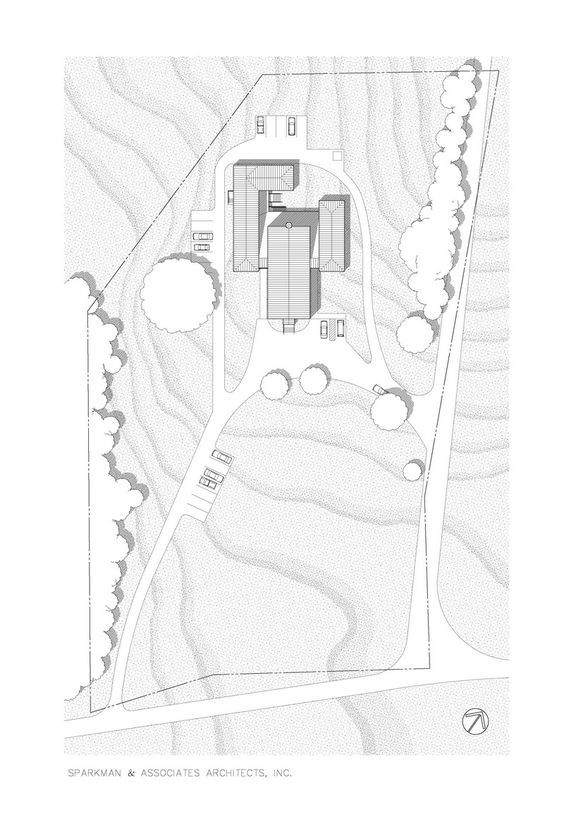
Source: ArchiSoup
This suburban residential site plan showcases exemplary site plan architecture by seamlessly integrating the natural landscape with the built environment. The plan utilizes the topography to guide the placement of pathways and driveways, ensuring efficient circulation while preserving the site’s natural features.
The site plan architecture emphasizes the strategic positioning of green spaces and trees to enhance privacy and reduce noise. Additionally, the layout ensures accessibility and functionality, with clearly marked parking areas and smooth transitions between different sections of the property. This site plan serves as a prime example of how thoughtful planning can create a harmonious and sustainable living environment.
3. Hillside Residential Site Plan
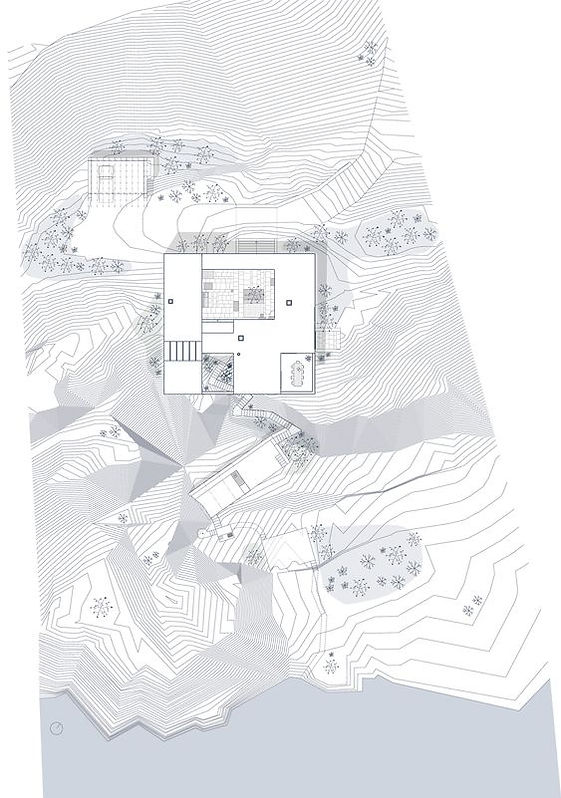
Source: Dezeen
This hillside residential site plan exemplifies innovative site plan architecture by effectively utilizing the natural slope of the terrain. The plan carefully positions the building to minimize excavation and disturbance to the site, preserving the natural contours and reducing environmental impact.
The site plan architecture incorporates terraced landscaping to manage water runoff and prevent erosion, enhancing the stability of the site. Additionally, the layout ensures that all pathways and access points are designed to follow the natural topography, providing seamless integration with the landscape. This approach demonstrates how site plan architecture can create a harmonious and sustainable design that works with, rather than against, the natural environment.
4. Lakeside Residential Site Plan
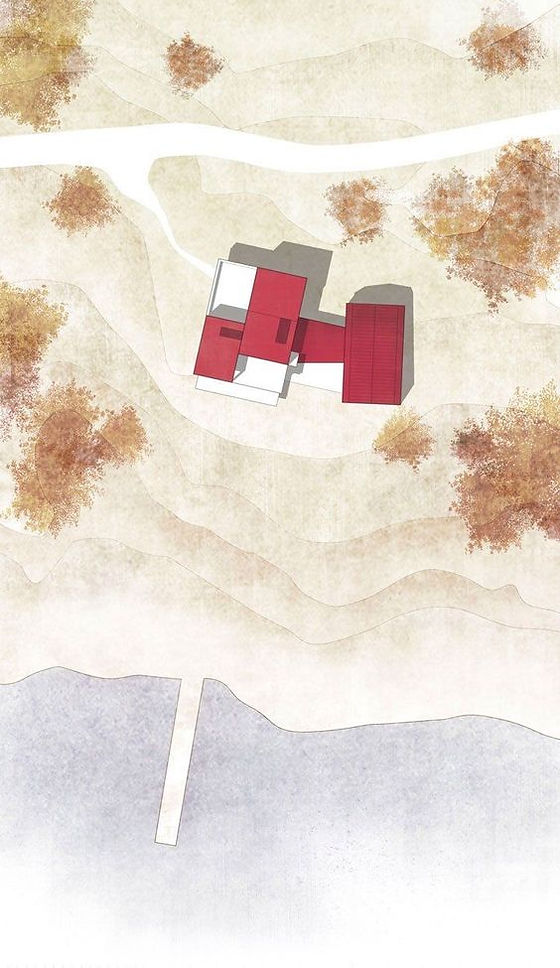
Source: Pinterest
This lakeside residential site plan is a prime example of effective site plan architecture, thoughtfully designed to harmonize with the waterfront environment. The plan strategically places the building to maximize lake views while maintaining a safe distance from the water’s edge to prevent flooding and erosion issues.
The site plan architecture includes well-defined pathways and access routes that connect the residence to the lakefront, enhancing both functionality and aesthetic appeal. The integration of natural vegetation and trees within the site plan helps to stabilize the soil and provide privacy, blending the built environment seamlessly with the natural surroundings. This example demonstrates how careful site planning can create a beautiful and sustainable lakeside retreat.
5. Urban Park and Mixed-Use Development Site Plan
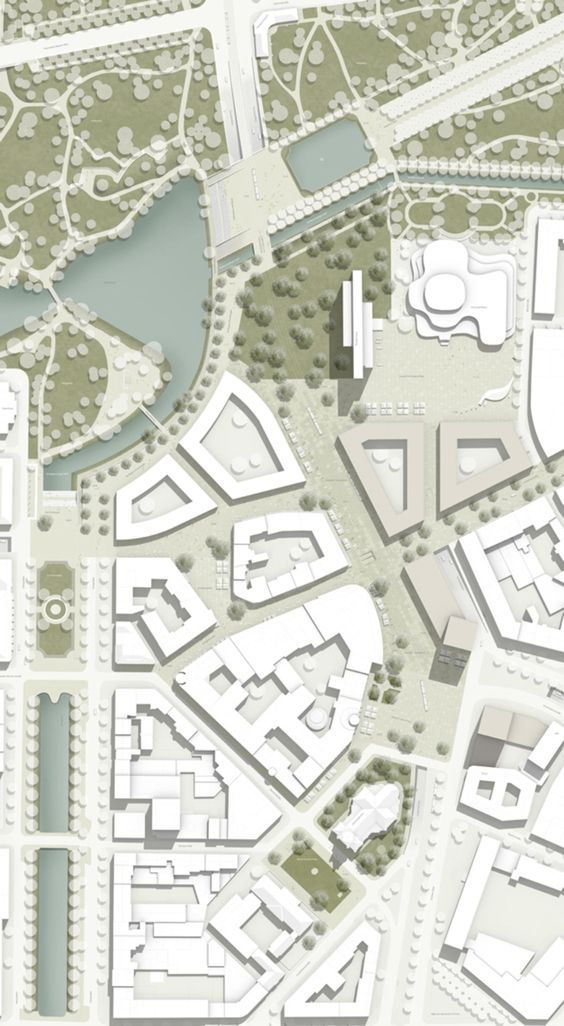
Source: Divisare
This urban park and mixed-use development site plan exemplifies advanced site plan architecture by effectively integrating various land uses within a cohesive framework. The layout strategically positions residential, commercial, and recreational areas to maximize accessibility and connectivity.
Key features of this site plan architecture include well-planned green spaces that provide both aesthetic and functional benefits, such as noise reduction and air quality improvement. The integration of pathways and water features enhances the overall user experience, promoting walkability and community interaction. This site plan serves as a model for how urban spaces can be designed to accommodate multiple functions while maintaining a balanced and attractive environment.
6. Koala Habitat Site Plan
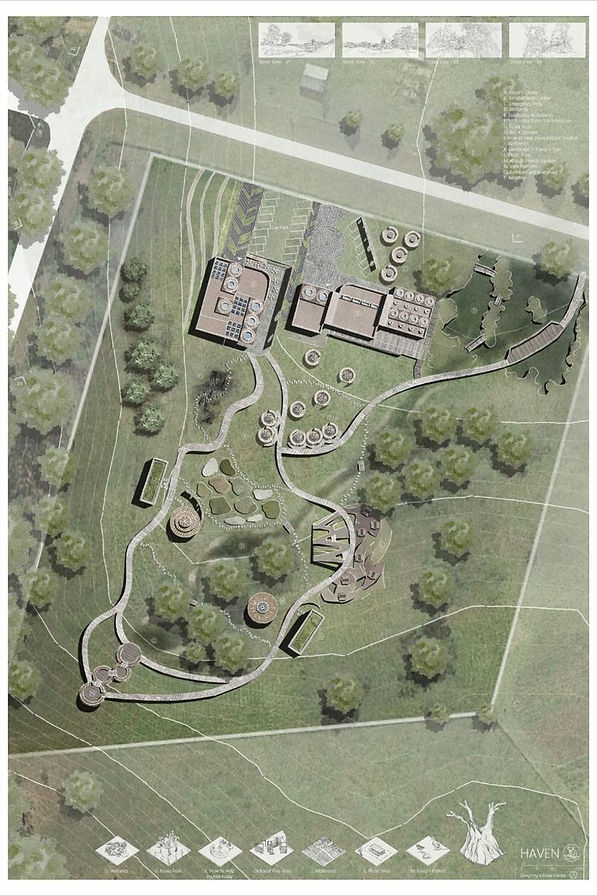
Source: Pinterest
This Koala Habitat site plan is a standout example of specialized site plan architecture, designed to support both the needs of wildlife and visitors. The layout carefully incorporates natural elements to create a habitat that mimics the koalas’ natural environment, with strategically placed trees and green areas providing essential food and shelter.
The site plan architecture also includes pathways and viewing areas that allow visitors to observe the koalas without disturbing their habitat. The integration of educational spaces and interactive exhibits within the plan ensures that the site serves both conservation and educational purposes. This thoughtful approach to site plan architecture demonstrates how human and wildlife needs can be balanced through careful and innovative planning.
7. Agricultural and Industrial Interface Site Plan
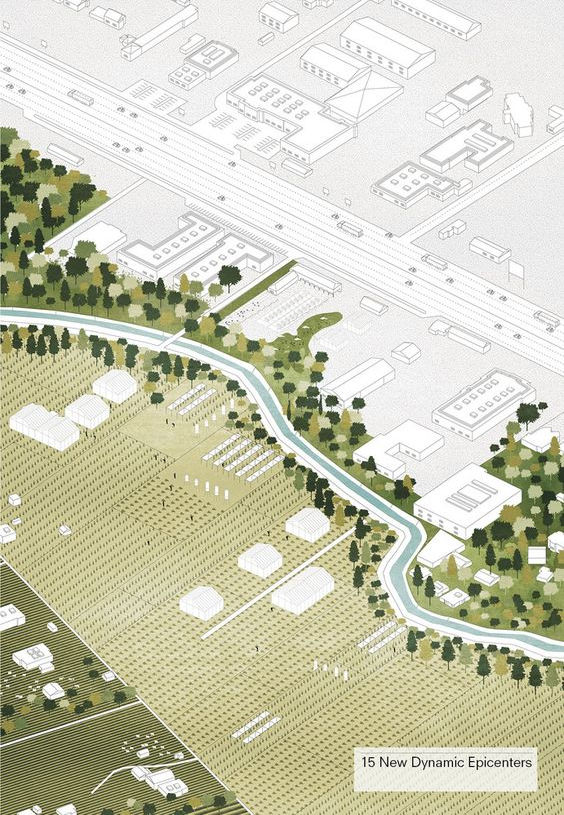
Source: ArchDaily
This agricultural and industrial interface site plan exemplifies how site plan architecture can effectively balance multiple land uses. The layout carefully delineates agricultural areas from industrial zones, using natural buffers like trees and waterways to minimize conflicts and enhance environmental management.
The site plan architecture ensures efficient access and circulation, with clearly defined pathways and roads that facilitate movement between different areas. This strategic organization promotes both agricultural productivity and industrial efficiency, showcasing how well-designed site plan architecture can optimize land use and operational functionality.
8. Impala House Site Plan
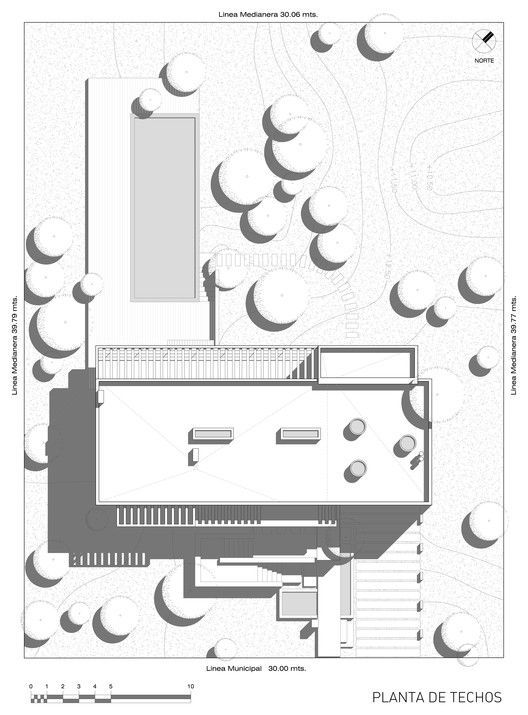
Source: ArchDaily
This Impala House residential site plan highlights exemplary site plan architecture with its clear and organized layout. The plan effectively integrates the built environment with the natural surroundings, ensuring minimal disruption to the existing woodland.
Key features of this site plan architecture include the strategic placement of structures to maintain ample open space and the preservation of natural tree cover. The pathways and access routes are designed to blend seamlessly with the landscape, promoting easy navigation while maintaining the site’s natural aesthetics. This site plan serves as an excellent example of how thoughtful layout and presentation can enhance both functionality and environmental harmony.
9. Urban Mixed-Use Development Site Plan
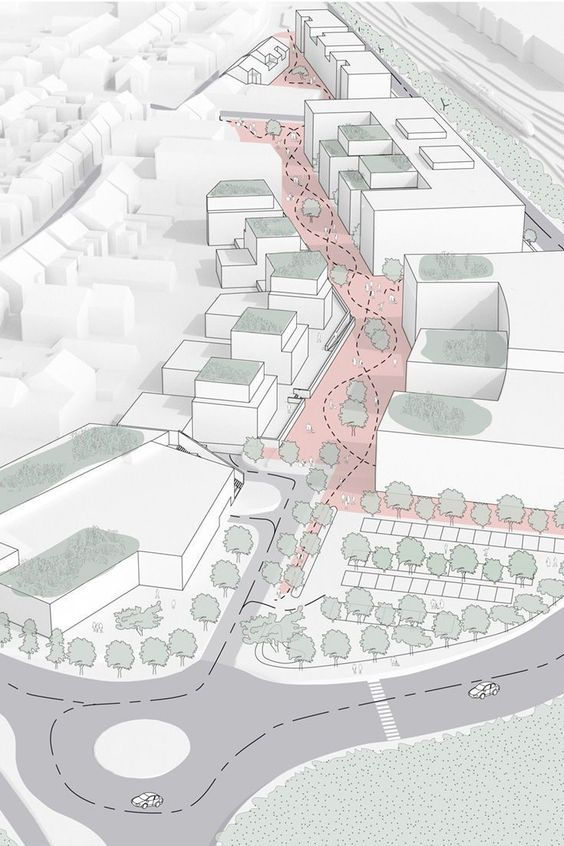
Source: Pinterest
This urban mixed-use development site plan showcases exemplary site plan architecture through its organized and efficient layout. The plan strategically positions buildings to optimize space usage and enhance accessibility, with a clear delineation between commercial, residential, and public areas.
The site plan architecture emphasizes connectivity, featuring well-designed pathways that facilitate smooth pedestrian flow and access to various parts of the development. The inclusion of green spaces and trees throughout the site enhances the urban environment, providing aesthetic and environmental benefits. This site plan serves as a model for how careful planning and layout can create vibrant and functional urban spaces.
10. Clustered Residential Site Plan
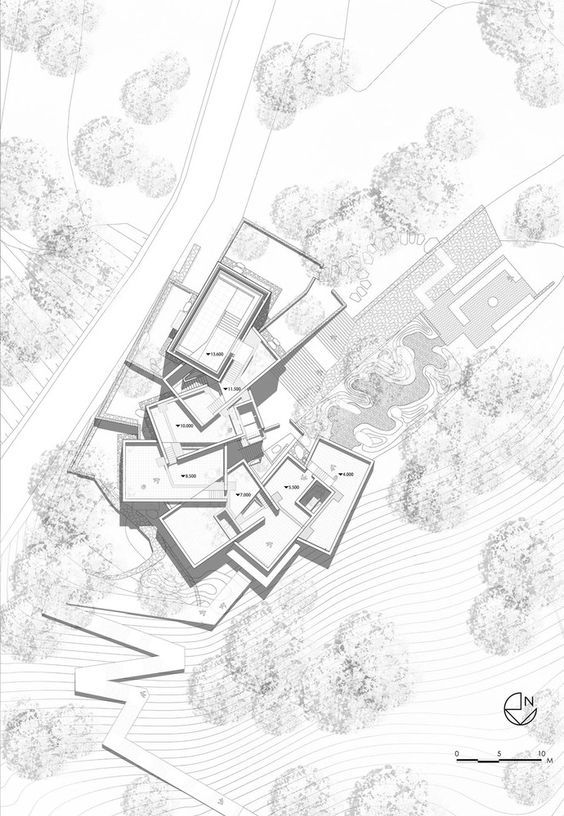
Source: ArchDaily
This clustered residential site plan demonstrates innovative site plan architecture through its compact and efficient layout. The plan strategically groups buildings to create a sense of community while preserving ample open space and natural elements.
The site plan architecture ensures seamless circulation with interconnected pathways that provide easy access to each unit and communal areas. The integration of natural landscaping within the plan helps to enhance privacy and aesthetic appeal, creating a harmonious living environment. This example highlights how thoughtful layout and presentation in site plan architecture can foster a cohesive and sustainable residential community.
11. Waterfront Urban Development Site Plan
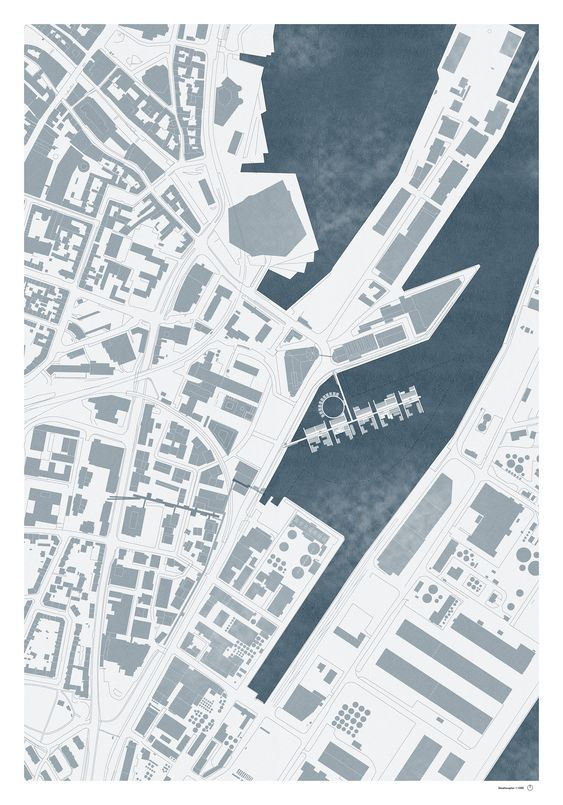
Source: Pinterest
This waterfront urban development site plan showcases exemplary site plan architecture with its organized and thoughtful layout. The plan clearly delineates different zones for residential, commercial, and recreational use, ensuring efficient land utilization.
The site plan architecture emphasizes connectivity, with well-designed pathways and roads facilitating smooth access between the waterfront and the surrounding urban areas. The strategic placement of green spaces and public areas enhances the site’s functionality and aesthetic appeal. This layout demonstrates how careful planning can create a cohesive and integrated urban environment that leverages its waterfront location.
12. Coastal Community Site Plan
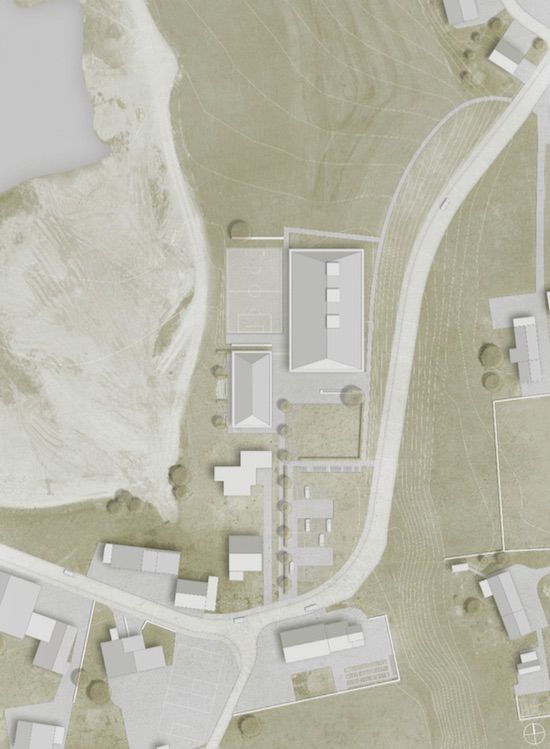
Source: Pinterest
This coastal community site plan demonstrates effective site plan architecture through its organized and logical layout. The plan carefully arranges residential and community buildings along the coastline, maximizing views and access to the waterfront.
The site plan architecture includes well-defined roads and pathways that ensure efficient circulation throughout the community. Open spaces and green areas are strategically placed to provide recreational opportunities and enhance the aesthetic appeal of the site. This example illustrates how thoughtful site planning can create a functional and visually appealing coastal community that harmonizes with its natural surroundings.
13. Urban Park and Facility Site Plan
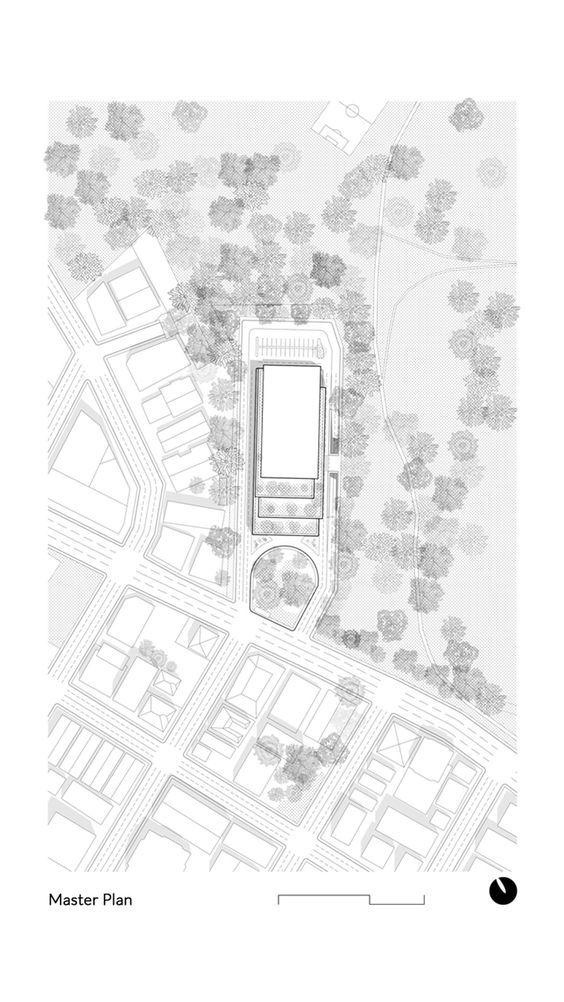
Source: Pinterest
This urban park and facility site plan illustrates effective site plan architecture through its clear and functional layout. The plan integrates a central facility surrounded by green spaces and trees, creating a harmonious balance between built and natural environments.
The site plan architecture includes well-defined pathways that ensure easy access to the facility and enhance pedestrian circulation throughout the park. Parking areas are strategically placed to maximize convenience without compromising the aesthetic quality of the site. This example demonstrates how thoughtful site planning can create an inviting and functional urban park that serves both recreational and practical purposes.
14. Forest Retreat Site Plan
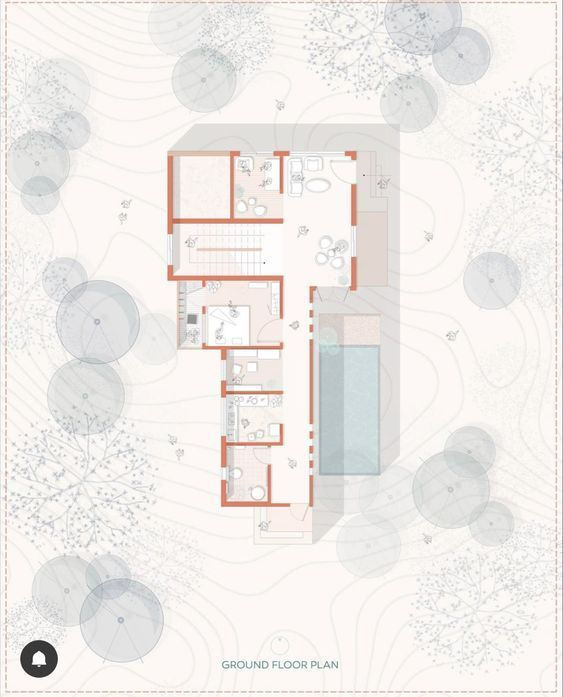
Source: Pinterest
This forest retreat site plan showcases exemplary site plan architecture with a focus on integrating the built environment seamlessly into the natural landscape. The layout positions the main structure amidst existing trees, ensuring minimal disruption to the forest ecosystem.
The site plan architecture includes carefully designed pathways that connect different sections of the retreat, promoting easy navigation while preserving natural features. Open spaces around the building are strategically planned to enhance privacy and provide serene views. This example demonstrates how thoughtful site planning can create a harmonious balance between architecture and nature, offering a tranquil retreat experience.
15. Modern Residential Complex Site Plan
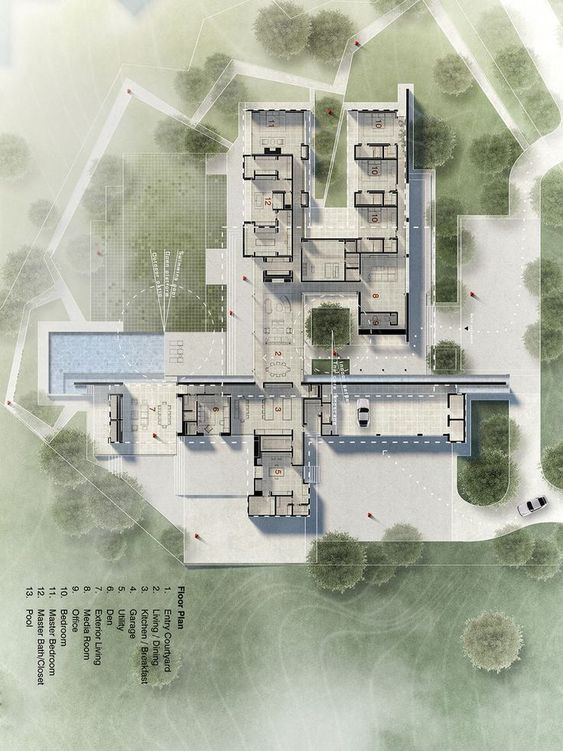
Source: Pinterest
This modern residential complex site plan exemplifies effective site plan architecture through its well-organized layout. The plan positions multiple residential units around central courtyards, creating a cohesive and community-oriented environment.
The site plan architecture includes clearly defined pathways and roadways that ensure smooth circulation throughout the complex. Green spaces and recreational areas are strategically placed to enhance the living experience and provide areas for relaxation and social interaction. This layout demonstrates how thoughtful site plan architecture can create a functional and aesthetically pleasing residential community.
The Importance of Site Plan Architecture in Modern Construction
Site plan architecture is a foundational element in modern construction, shaping the way projects are conceived and executed. It ensures that all aspects of a development are harmoniously integrated, resulting in a cohesive and functional design.
Enhancing Functionality and Efficiency
One of the primary goals of site plan architecture is to enhance the functionality and efficiency of a space. By carefully planning the layout, architects can optimize the flow of movement, maximize the use of space, and ensure that all elements work together seamlessly. This level of planning is crucial for large-scale developments such as residential complexes, commercial centers, and public facilities.
Ensuring Compliance with Regulations
Site plan architecture also plays a vital role in ensuring compliance with local zoning laws, building codes, and environmental regulations. These plans must meet specific requirements related to land use, density, building height, setbacks, and green spaces. By adhering to these regulations, developers can avoid costly delays and legal issues.
Facilitating Project Management
Site plan architecture is also crucial for effective project management. It provides a clear roadmap for all stakeholders, including architects, engineers, contractors, and clients. This comprehensive plan helps ensure that everyone is on the same page, facilitating smooth communication and coordination throughout the construction process.
Key Elements of Site Plan Architecture
Understanding the key elements of site plan architecture is essential for creating effective and aesthetically pleasing designs. Each component must be carefully considered to ensure the overall success of the project.
Topography and Site Analysis
A thorough analysis of the site’s topography is a fundamental step in site plan architecture. This involves studying the natural landscape, including elevations, slopes, and drainage patterns. Understanding these features helps architects to design buildings and infrastructure that harmonize with the natural environment and minimize environmental impact.
Building Placement and Orientation
The placement and orientation of buildings are crucial elements of site plan architecture. Buildings must be strategically positioned to maximize natural light, ventilation, and views, while also considering privacy and noise reduction. Proper orientation can also enhance energy efficiency by taking advantage of passive solar heating and cooling.
Landscaping and Open Spaces
Incorporating landscaping and open spaces is a vital aspect of site plan architecture. Green spaces, parks, and gardens not only enhance the aesthetic appeal of a development but also promote environmental sustainability and provide recreational areas for residents. Effective landscaping can also help manage stormwater runoff and reduce the urban heat island effect.
Infrastructure and Utilities
Site plan architecture must include detailed plans for infrastructure and utilities, such as roads, water supply, sewage systems, and electrical grids. Ensuring that these essential services are efficiently integrated into the design is critical for the functionality and livability of the development. Proper planning can also mitigate potential issues related to traffic congestion and utility overloads.
Accessibility and Circulation
Accessibility and circulation are key considerations in site plan architecture. The design must provide convenient and safe access for pedestrians, vehicles, and cyclists. This includes planning for walkways, bike paths, parking areas, and public transportation links. Good circulation design enhances the usability and connectivity of the site, making it more attractive and functional for its users.
How to Make an Architectural Site Plan
If you are looking to create your own site plan, start by conducting a thorough analysis of your site and its conditions. Gather all relevant data, including topography, climate, and existing infrastructure. Engage with stakeholders to understand their needs and preferences, and ensure that your design complies with all local regulations. Use software tools and technologies to create detailed and accurate plans, and be prepared to iterate on your design based on feedback and new information.
Creating a successful site plan architecture requires careful planning, creativity, and attention to detail. By following these guidelines and learning from the examples of others, you can develop site plans that are innovative, sustainable, and perfectly suited to their intended purpose.
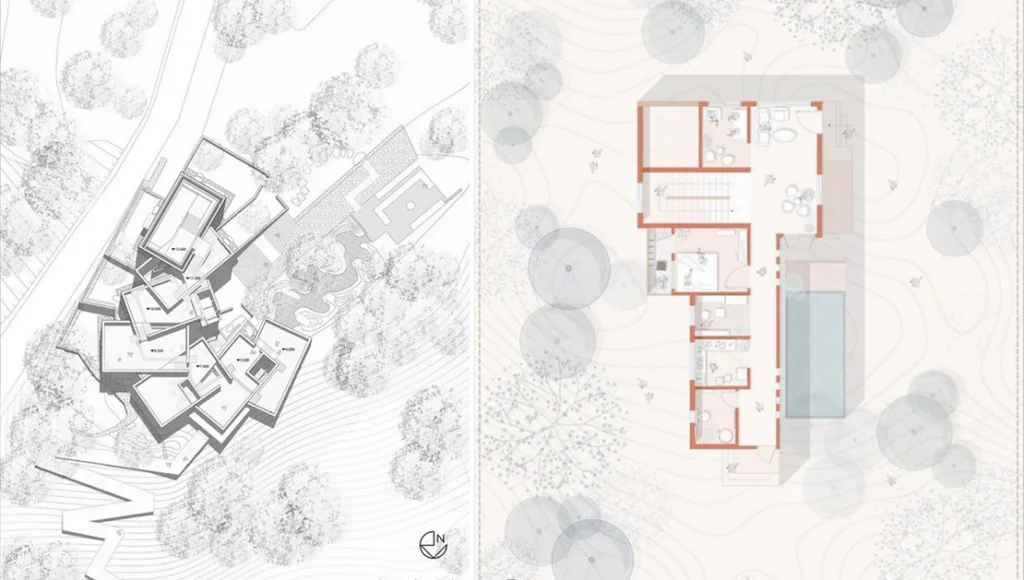
Recent Posts
15 Floor Plan Graphic Styles That Will Elevate Your Presentation Game
The Role of Shadows in Architectural Storytelling
When Furniture Becomes Architecture: Blurring the Line